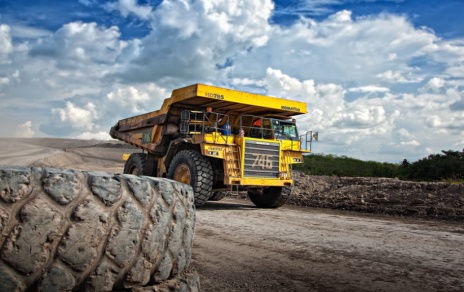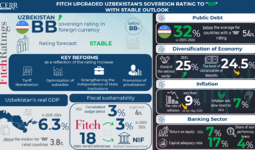Kitco ranked the world's biggest gold mines by production in 2020. The ranking below was developed on the basis of 2020 (calendar year) production figures reported by companies and preliminary estimates for Muruntau. Gold output is in thousand ounces (koz).
1. The Muruntau mining complex, located in Uzbekistan and consisting of open-pit mine and heap leach operations, is estimated to have produced slightly more than 2 million ounces of gold in 2020. Navoi Mining & Metallurgy Combinat (NGMK) owns the mine.The mine was discovered in 1958. It measures about 3.5km by three kilometres and has a current mining depth of 600m, which is planned to be extended beyond 1,000m. Surface mining works commenced in 1967. Considering the stunning resource base, estimated in excess of 150 million ounces, Muruntau will likely keep its title as the world's biggest gold mine in the nearest future.
The list follows with other gold mines:
2. Carlin, USA. 1,665 koz.
On July 1, 2019, Barrick's Goldstrike (including 60% share of South Arturo) and Newmont's Carlin were contributed to Nevada Gold Mines and are now referred to as Carlin. This gigantic integrated operation located west of the city of Elko on the geologic feature known as the Carlin Trend. Stretching 56km (35mi), the Carlin Trend was first prospected by Newmont geologists John Livermore and Alan Coope in 1965.
3. Olimpiada, Russia. 1,200 koz.
Located in one of Russia's most prolific gold mining provinces, gigantic Olimpiada mine is Polyus' largest operation. The mine began production in 1996 and currently accounts for over a half the Moscow-based company's total gold output. The ore mined at the site is processed at three plants with a combined capacity of 13 million tonnes of ore annually.
4. Pueblo Viejo, Dominican Republic. 903 koz.
The Pueblo Viejo mine in the Dominican Republic is about 100 km northwest of the capital city of Santo Domingo. The mine is operated by the Pueblo Viejo Dominicana Corporation — a joint venture between Barrick (60%) and Newmont (40%).
5. Grasberg, Indonesia. 848 koz.
Freeport-McMoRan's Grasberg copper-gold deposit in the Indonesian province of Papua was discovered in 1936 by a Dutch geologist who called it Ertsberg or “ore mountain”. The mine, which provides work for 30,000 people, is located 4,100m above sea level near Puncak Jaya, the highest mountain in Papua. Production of gold peaked in 2001 at above 3,500 koz.
6. Cadia East, Australia. 823 koz.
Newcrest's Cadia is made up of the Cadia East underground panel cave mine and the Ridgeway underground mine (currently in care and maintenance). Cadia East is the biggest gold mine in Australia.
7. Kibali, Democratic Republic of Congo. 808 koz.
Kibali mine in Democratic Republic of Congo is situated adjacent to the town of Doko and 210km from Arua on the Ugandan border. Kibali is co-owned by AngloGold Ashanti (45%), Barrick Gold Corporation (45%) following its merger with Randgold Resources, and Société Minière de Kilo-Moto (SOKIMO) (10%), a state-owned gold mining company.
8. Cortez, USA. 799 koz.
Cortez gold mine is a large gold mining and processing facility in Lander and Eureka County, Nevada, United States, located approximately 75 miles (120 km) southwest of Elko and comprises the Pipeline and South Pipeline deposits and the Cortez Hills deposit. Pipeline and South Pipeline are open pit mines, while Cortez Hills is an underground and open pit mining operation. On July 1, 2019, Cortez was contributed to Nevada Gold Mines, a joint venture between Barrick and Newmont.
9. Lihir, Papua New Guinea. 772 koz.
Newcrest's Lihir operation on Aniolam Island in the New Ireland Province of Papua New Guinea is 900 kilometres north-east of the capital Port Moresby. The gold deposit at Lihir is within the Luise Caldera, an extinct volcanic crater that is geothermally active.
10. Loulo Gounkoto, Mali. 680 koz.
Barrick's Loulo-Gounkoto complex comprises two distinct mining permits, Loulo and Gounkoto, and is situated in western Mali, bordering Senegal and adjacent to the Falémé River. Société des Mines de Loulo SA (Loulo) owns the Loulo gold mine, and Société des Mines de Gounkoto (Gounkoto) owns the Gounkoto gold mine. Both Loulo and Gounkoto are owned by Barrick (80%), and the State of Mali (20%).
Prepared by Kuldasheva Zebo
Researcher at CERR





















leave a comment